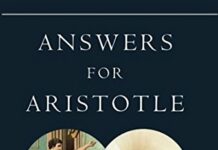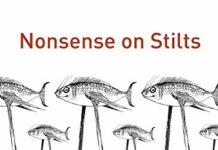
Ebook Info
- Published: 2017
- Number of pages: 289 pages
- Format: PDF
- File Size: 2.03 MB
- Authors: Massimo Pigliucci
Description
A philosopher asks how ancient Stoicism can help us flourish today Whenever we worry about what to eat, how to love, or simply how to be happy, we are worrying about how to lead a good life. No goal is more elusive. In How to Be a Stoic, philosopher Massimo Pigliucci offers Stoicism, the ancient philosophy that inspired the great emperor Marcus Aurelius, as the best way to attain it. Stoicism is a pragmatic philosophy that focuses our attention on what is possible and gives us perspective on what is unimportant. By understanding Stoicism, we can learn to answer crucial questions: Should we get married or divorced? How should we handle our money in a world nearly destroyed by a financial crisis? How can we survive great personal tragedy? Whoever we are, Stoicism has something for us—and How to Be a Stoic is the essential guide.
User’s Reviews
Reviews from Amazon users which were colected at the time this book was published on the website:
⭐IntroductionIn the 20th century the “west” succumbed to the infiltration of skepticism to the masses. In past centuries it was generally limited to academic circles. All of that changed with public education and the capacity of certain elites, after the instruction of Mann and Dewey, to bring skepticism to the masses. We now have a skeptical culture.It is skeptical not in the sense of simple doubt but rather of a persuaded doubt. That is, the doubt is not an automatic desire to question certain realities. Rather it is a doubt driven by external forces. This is the skepticism of U. C. Berkeley that is not willing to be skeptic al of its own skepticism but instead rejects all criticism of itself.The book that I see as being the dominant reinforcing work of the 20th century is Bertrand Russell’s “Why I am not a Christian.” This work, well-written, presented a skilled approach to skepticism. Russell was a notable philosopher and mathematician of the era. His work was well-received in skeptical circles. At a minimum the book persuaded people, preemptively, to reject the arguments and apologetics of Christianity.The 21st century on the other hand was to this point headed a different direction. The new atheists’ works, though written by some skilled scientists and such, were generally shoddy efforts. The is-ought problem was glossed over as though it didn’t exist. Questions of origins were presented with a triumphalistic tone instead of arguments from evidence and models. Hostility was the method of argumentation with the heckler’s veto no longer treated as a fallacy.I’ve read other of Pigliucci’s material. The “third wave” in origins and genetics discussions seems to bear weight with respect to our physical nature. I anticipate that the movement’s impact will be felt for a long time to come. But I did not realize that he was trained in philosophy. That makes this work stand out from the New Atheist material – it’s a quality piece. It’s well-written very readable for non-philosophers.OverviewThis work might be considered a study of the life of Epictetus. It’s almost biographical as it covers a number of significant points in his life. But that’s really a pretext of the book. What he has provided comes in three parts. The first is to clarify the need for this worldview. The second is to provide the guiding principles, and the third is application of these principles to modern life.He begins with his own apologetic. I noted the problems (the challenges and the offensiveness) of the New Atheists. These things also concern him, seeing their tone and content as unproductive and even damaging to progress in their arena. But as he journeyed through life the Stoicism movement came to meet his needs. It is rational, practical, and provides him a way to prepare for death.The scientist in him allows him to man as an animal but the philosopher in him allows the perspective of man as a very unique animal. Man is an animal capable of high moral assessment. Man is able to find a cause for morality, a goal which the New Atheists are not able to deliver.Skepticism itself is inadequate. The simple application of reason is insufficient. It creates the common is-ought problem as well as a serious categorical error. But Stoicism provides him (using a term more familiar to me) a cumulative case system. With the Stoic approach he has a foundation for ethics which is more complete than either rationalism or empiricism. The latter, like the New Atheist approach, cannot deliver a coherent and consistent system.Living in accord with nature for the Stoic is not like something the hippies or other anti-moderns might attempt. Rather it means accepting fate, but even that is not a passive matter. He quotes Francis of Assisi about accepting the things we cannot change and seeking wisdom for changing what can be changed. This is cooperating with the natural world.The virtues of Stoicism are first wisdom, then courage, temperance, and justice. He argues that these are nearly universal and should be accepted as a categorical imperative. He notes that Aquinas accepted these virtues but placed about them, in a two-story solution, first charity (love), then faith and hope.Stocism also forces a person to think. In our world today we are faces with a society that gives little attention to becoming a better person. Stocism does this by asking us to think about our choices. He cites Medea for this, an ancient Greek tragedy concern with a woman of the title name who makes a choice to kill her children out of revenge.Closely related to this is his hierarchical view of ethics. It’s a two-story solution where Category A and Category B have internal interactions but not between themselves. For instance, selling goods may be an acceptable ethical trade in general but one does not normally sell one’s children. The categories do not cross.The final portion of the book is concerned with finding ways to make the system work in the modern world. His exercises are practical for use in every-day living. Of note is his admiration of Admiral Stockdale as he reflects on Stockdale’s life and accomplishments. His applications deserve consideration and evaluation.Apologetic ResponseFirst, it is nice to read an opponent who is so civil. It is something that he acknowledges that he has learned over time. That makes for potentially (and highly desired) positive and civil interaction.I see this book as potentially as damaging as Russell. By providing a coherent system in a clear and unoffensive format he tempts the reader to the position. It is going to be difficult to resist. Yet there are some glaring weaknesses that require mention and evaluation. (By comparison the New Atheists are merely low-hanging fruit.) I did not cover all of these matters in the overview.I raise just five points for the Christian apologist to consider with this work. The trained philosopher will surely find more points of interest.It seems unavoidable in ancient Greek philosophy to avoid the problem of dualisms and dialectical issues. As such he presents joy and pain in opposition. This is not a problem only with ancient philosophies but regularly rears its head in more modern works such as Kant, Bentham, and Mill. Whether Platonist, neo-Platonist, gnostic, or whatever form the system takes, the division of events based on perception is arbitrary and artificial. The Judeo-Christian response is a highly-unified view of life as seen I the life of Job.He seeks a solution which is rational and devoid of any specific deity. He goes so far as to propose that a Unitarian view of God is sufficient but with Reason being the guide. In any case Reason is lifted up above the deity of choice. His rationalism sets his position distinctly apart from the ancient system. What seems to be missed is the inadequacy of Reason, a lack which is not filled by allowing Reason to fill in “deity” as though it is a piece in a jigsaw puzzle.He is highly optimistic about the human capacity for good, to have and live a good life. But what is good? The absence of pain? The greatest pleasure? The question is left open. In this he also generally avoids the idea that humans are equally capable of evil. Bu then again, what is evil? Is there an intrinsic character trait? (He is correct that there is no “evil” as some sort of abstract object.) Because of this fluidity any sense of morality seems up in the air, undefinable.Eschatology is important. Eschatology is hope. It’s why Trump beat Hillary – because making America great has a purpose while preaching that we can do more amounts to extra work. Eschatology has to extend to something beyond this life, to some higher purpose. Stoicism cannot accomplish that, at least not as I read here.Finally, there is the matter of individualism. Christianity cannot be defined without community – the church. Though its expression depends on the systematic at work there is always a fellowship at play. Ethical choices take place in community hence the presence of church discipline and the authority of the Bible above all. Stoicism provides a good collection of operating principles, many of which have been borrowed by Christians. But here it serves more as a corrective than a guide.ConclusionThis was an enjoyable read. It’s a useful book. And it deserves to be read and evaluated by Christian apologists and given the attention due.
⭐This book is a good read for those new to understanding Stoicism.
⭐I can still recall the first time I was introduced to Stoicism. I majored in philosophy and was fortunate to take most of my courses from an aging professor who is undoubtedly the most analytical person I’ve ever met. We read only primary texts. And this professor would methodically reconstruct each author’s argument on a (real) blackboard, leading the discussion through Socratic questioning. In a course covering ancient philosophy, he introduced us to Epictetus. After leading us through the argument of the first section of the Enchiridion, he commented: “In my view, this is the only argument in the history of philosophy that actually proves its conclusion.” Coming from him, this was a striking statement. In every other instance, he steadfastly refused to say if he thought an argument was (or was not) successful.Epictetus is the central character in How to Be a Stoic. Dr. Pigliucci claims Epictetus as his favorite Stoic, and he engages in a kind of ongoing dialogue with the philosopher using the ancient texts. The book is organized (following two introductory chapters) into three parts: 1) The Discipline of Desire; 2) The Discipline of Action; and 3) The Discipline of Assent. He covers such topics as character, mental illness, disability, loneliness, and death.In the chapter covering disability, Dr. Pigliucci discuses the life of another Stoic academic, Dr. Lawrence Becker. Dr. Becker turned to Stoicism early in life to help meet the challenges of a physical disability. The first thing that Dr. Becker did as a Stoic novice was to reclaim his “agency”. To cope with a hardship, we should begin by telling ourselves we can and will take responsibility for meeting our challenges. Though simple, this resonated deeply with me. I am something of a fatalist by nature. But whatever the ultimate truth is regarding free will, Dr. Becker’s practical approach is helpful: Reclaim your agency! And then see what you can do–today–to improve your sense of well-being.This an excellent introduction to Stoicism and overall a very good book. The writing is clear and engaging. The topics feel relevant. Most importantly, the book is eminently practical. If you’re interested in Stoicism, this is a great place to start. It’s also a great place to finish, especially if you’re only looking for the basics. You can read this book, begin doing the “spiritual” exercises–maybe find a copy of Epictetus’s Manual–and “be” a Stoic. It will also serve as a fantastic introduction for a much deeper dive into Stoic philosophy. And finally, if you’ve already studied and practiced Stoicism, you may still benefit from Dr. Pigliucci’s application of Stoic principles to modern problems.It’s been nearly a decade and a half since I was introduced to Stoicism. As I made my way through young adulthood, I often returned to Stoicism through the works of Seneca and Epictetus, as well as more contemporary authors. I can hardly call myself a Stoic. Somehow I feel compelled to avoid the label altogether. How to Be a Stoic opened a new pathway: Label or no label, there are many things I can do that just might lead to a lasting change.
⭐Excelente introdução ao estoicismo. Ler os três grandes estóicos sem um livro-guia como esse pode fazer com que o leitor se confunda entre as opiniões de um deles e temas centrais da filosofia. Isso é especialmente válido para o Epiteto que é o filósofo mais citado em How to Be a Stoic.Além disso, é uma excelente introdução aos textos do Massimo, que é um dos autores mais lúcidos que já li.Sugiro que o leitor que tenha gostado do estilo do autor procure a página no Patreon dele e leia as centenas de ensaios que ele produz sobre como aplicar filosofia no dia-dia. E até polêmicas como “Jeff Bezos é um estóico?”.Gostei tanto do livro que comprei o físico, a versão eletrônica e o audiobook.The Stoics kept it simple, as does this very short quasi autobiographical book. The impression of “having all the answers” and applying them to everything big and small is a bit grating. The reader will want to dig a bit more though, and the book gives a menu of options to pursue. Definitely a good launchpad.
⭐Pensé que este libro sería mejor, su modo de aplicar el estoicismo en la vida cotidiana es muy básico, incluso se me hizo de sentido común, lo rescatable es el análisis histórico y como aún en ciertas ideologías el estoicismo sigue presente.I initially tried to treat this as a textbook by skimming for information that I could apply.That was the wrong approach. I am taking my time with the second reading and having a much better experience.The book is a pleasant read and it makes the core teachings of Stoicism very accessible.
⭐Uma síntese rigorosa, leve e muito bem feita do Estoicismo, em particular, e da filosofia helenística em geral. Imperdível, para qualquer leitor interessado.
⭐
Keywords
Free Download How to Be a Stoic: Using Ancient Philosophy to Live a Modern Life in PDF format
How to Be a Stoic: Using Ancient Philosophy to Live a Modern Life PDF Free Download
Download How to Be a Stoic: Using Ancient Philosophy to Live a Modern Life 2017 PDF Free
How to Be a Stoic: Using Ancient Philosophy to Live a Modern Life 2017 PDF Free Download
Download How to Be a Stoic: Using Ancient Philosophy to Live a Modern Life PDF
Free Download Ebook How to Be a Stoic: Using Ancient Philosophy to Live a Modern Life


